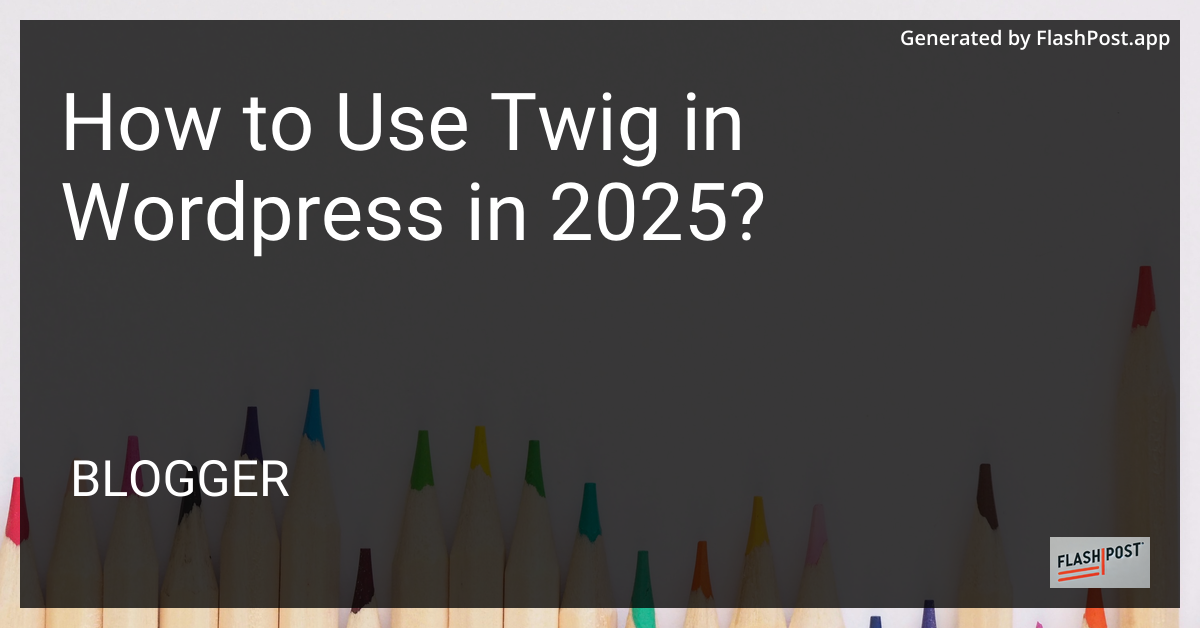How to Use Twig in Wordpress in 2025?

How to Use Twig in WordPress in 2025
In the evolving world of WordPress development, leveraging modern templating engines like Twig can significantly streamline theming workflows and enhance your site’s performance. By 2025, using Twig with WordPress is not only efficient but highly recommended for developers aiming to create clean and maintainable code. This article will guide you on integrating and utilizing Twig within your WordPress environment.
Why Use Twig in WordPress?
Benefits of Twig
- Separation of Logic and Presentation: Twig’s syntax emphasizes the separation of PHP logic from HTML presentation, making your code more readable and maintainable.
- Enhanced Security: Twig automatically escapes variables to prevent security vulnerabilities such as XSS attacks.
- Reusable Code: The use of Twig’s blocks and extends features allows for more reusable and manageable code structures.
Pre-Requisites
- A basic understanding of PHP and WordPress theme structure.
- Composer installed on your local development environment.
Setting Up Twig in WordPress
Step 1: Installing Timber
Timber is a popular library that allows the usage of Twig in WordPress. It acts as a bridge between WordPress and Twig.
composer require timber/timber
This command installs Timber via Composer, a PHP package manager.
Step 2: Activating Timber
To activate Timber, include the following in your theme’s functions.php file:
// Include Timber
require_once __DIR__ . '/vendor/autoload.php';
// Ensure that Timber is available
if ( ! class_exists( 'Timber' ) ) {
add_action( 'admin_notices', function() {
echo '<div class="error"><p>Timber not activated. Make sure you ran composer install.</p></div>';
});
return;
}
// Setup our theme
class MyTheme extends Timber\Site {
public function __construct() {
add_action( 'after_setup_theme', [ $this, 'theme_supports' ] );
parent::__construct();
}
public function theme_supports() {
// Additional theme supports
}
}
new MyTheme();
Step 3: Creating Twig Templates
To create a Twig template, simply create a .twig file within your theme’s directory.
For more examples on Twig templates, check out this detailed guide on twig template creation.
Step 4: Rendering Templates with Timber
Once your Twig templates are set up, you can render them within your PHP files:
$context = Timber::context();
$context['posts'] = new Timber\PostQuery();
Timber::render( 'index.twig', $context );
Customizing Twig with Filters and Functions
You can extend Twig’s capabilities by adding custom filters and functions to your WordPress theme. Here’s an example of how to register a custom Twig filter:
add_filter('timber/twig', function($twig) {
$twig->addFilter(new Twig\TwigFilter('my_custom_filter', function($text) {
return strtoupper($text);
}));
return $twig;
});
For further reading on registering Twig filters, see the Symfony Twig filter registration guide.
Troubleshooting Common Twig Issues
In case you encounter a Twig\Error\LoaderError, it’s usually due to a template path issue. Ensure that the template paths within your WordPress setup are correctly configured.
For solutions to common Twig errors, refer to this Twig\Error\LoaderError troubleshooting resource.
Conclusion
Integrating Twig in WordPress can seem daunting initially, but with tools like Timber and a structured approach, you can unleash powerful templating features within your WordPress themes. By 2025, mastering such technologies will be key for WordPress developers aiming for efficient and secure web development. Happy theming!
Comments
Post a Comment